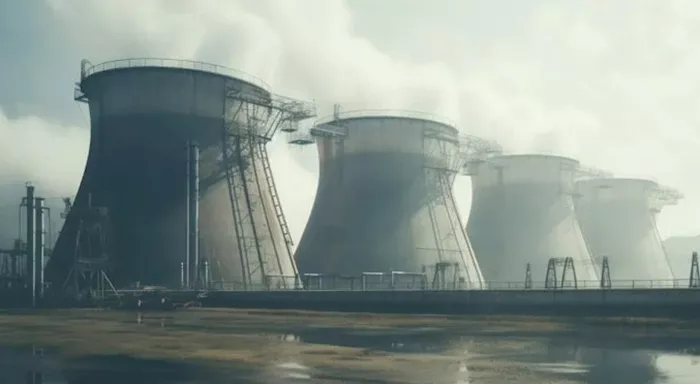The Biden administration has broadened the scope of hydrogen production tax credits to include electrolyzers powered by struggling nuclear power plants. The move, part of a broader effort to promote cleaner energy, also incentivizes the production of “blue hydrogen” from fossil gas when carbon dioxide (CO2) is captured during the process. Additionally, the government now supports hydrogen production from methane sourced from waste and coal mines.
The US Treasury Department recently finalized the rules for hydrogen production tax credits after a lengthy public consultation process. The goal is to encourage carbon-free energy in the emerging hydrogen sector while addressing methane emissions that would otherwise be released into the atmosphere.
This legislation, one of the last updates from President Joe Biden’s administration, stems from the 2022 Inflation Reduction Act (IRA). Despite its name, the IRA is a comprehensive package aimed at decarbonizing industrial production.
Currently, nearly all hydrogen worldwide is produced directly from natural gas, primarily methane, and is classified as “gray hydrogen.” This method remains the most cost-effective. When CO2 emissions are captured and stored during production, the resulting hydrogen is labeled “blue hydrogen.” Hydrogen produced using renewable energy is called “green hydrogen,” while nuclear-powered electrolyzers produce what is known as “pink hydrogen.”
President-elect Donald Trump, set to take office on January 20, retains the authority to amend or potentially scrap these new rules.
Pink Hydrogen to Support Struggling Nuclear Plants
The Treasury’s updated plan now includes tax credits for nuclear power plants, provided operators can demonstrate their facilities are economically unviable without such support. Analysts estimate that about 10% of the US nuclear capacity could qualify for these incentives.
The expanded scope also covers blue hydrogen and hydrogen produced from methane sourced from wastewater treatment, biowaste, landfills, and coal mines.
In the US, gray hydrogen typically sells for under 1 per kilogram in long-term contracts, while clean hydrogen costs at least 1.3 per kilogram. According to BloombergNEF, current production costs for clean hydrogen range from 3 to 11 per kilogram. Tax credits of up to $3 per kilogram could make some clean hydrogen projects financially viable.
Last year, several hydrogen production projects and pipeline investments were canceled, particularly in Europe, where the price gap between gray and clean hydrogen is even wider.
A key challenge is the lack of a balanced market with matching supply and demand, as well as a functional supply chain. The European Union is addressing this by offering substantial subsidies and supporting green hydrogen projects through its European Hydrogen Bank initiative.
The US has allocated $7 billion in funding for large-scale hydrogen projects. However, the blue hydrogen concept, which involves carbon capture and storage (CCS or CCUS), has drawn criticism. Some environmentalists argue it could serve as a backdoor for major fossil fuel companies to maintain their influence.
Hourly Clean Electricity Tracking to Begin in 2030
Starting in 2030, the US will require hourly tracking of renewable energy used for hydrogen production. This rule aims to prevent hydrogen production from straining the electricity grid and inadvertently increasing reliance on oil and gas power plants.
Hydrogen has potential applications in industries such as steel and fertilizer production, as well as in the creation of synthetic fuels and as an energy source for vehicles and ships.
The Biden administration’s latest move underscores its commitment to advancing clean energy solutions, though the incoming Trump administration could reshape these policies in the coming months.
Related topic:
- Monticello Nuclear Plant Secures 20-Year License Renewal
- AEMC’s Landmark Reform Opens Energy Market to Virtual Power Plants
- China’s Yebatan Hydropower Station Completes First Generator Installation

